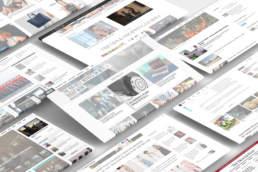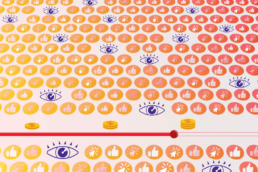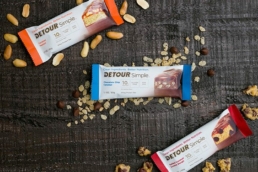Images have always been a powerful tool in advertising, but strong imagery is even more essential in today’s competitive world of online advertising. The image needs to grab the attention of the visitor and entice them to click; this is especially important with Native Advertising, since the ads are meant to match the look and feel of the content around it.
As we mentioned in our previous post on writing a strong native ad headline, an effective native ad should stand out, inform, and encourage interaction. Along with a great headline, images are one of the first things to attract attention from a user. Whether the image is eye-catching or triggers an emotional response, you’ll want to create a reason for a user to not only pay attention to your ad, but to then click. In part two of our Native Advertising best practices series, we’ll help you choose a Native Ad image to not only stand out, but capture the right audience for your brand.
1. Use Faces
Not surprisingly, facial expressions can have a powerful impact on a user by creating an emotionally contagious response. Ever seen someone yawn only to find yourself yawning? Yep, we’ve all been there—apologies if you are now yawning. As a rule of thumb, if you include a face in your ad, it should be representative of your target audience to drive a deeper connection by helping them relate to your product or service. Also, it’s best to show the face head-on and with clear emotion; ambiguous and unclear expressions won’t generate the same type of response.
2. Incorporate Familiar Imagery
A user will be more compelled to click on an ad if it highlights something or someone they recognize, as this can trigger a memory or emotional connection. For example, if you use a celebrity spokesperson on TV, use the same celeb in your Native Ad image to instill brand recognition. Or, reflect your audience or product in more natural environments—rather than posed or single product shots—to encourage users to subconsciously imagine themselves inside the experience you’re promoting. Connecting your message to something or someone a user has seen before can help strengthen a mental association between your brand and the prospective customer.
3. Use (Brand Appropriate) Colors
Various research has found that colors have the ability to influence how a consumer views the personality of your brand. In a much touted study by the University of Loyola, Maryland, color can increase brand recognition by up to 80%. In another study, Impact of Color in Marketing, researchers found up to 90% of snap judgements made about products are based on color alone. We aren’t surprised! If you’re selling fishing equipment geared toward outdoorsy men, bright pink probably isn’t the most suitable color to use. When in doubt, though, go with brighter (yet brand appropriate) colors in your image. Bright colors pop, which can help your ad avoid getting lost in competing content.
4. Be Transparent
As we’ve stated before, if a person feels compelled to click on your ad, it’s important to provide clues as to what they will find after the ad click. Along with a headline, the image should offer some degree of transparency as to what the user can expect once they click; best to leave the trickery to Mr. Copperfield because misleading users won’t win you any brownie points. By clearly communicating your product or service, you’re more likely to gain the right type of traffic to your site and increase conversions.
5. Trigger Emotions
People respond well to fun, relatable and/or entertaining content, and the Native Ad image gives you a perfect opportunity to be creative. Connect with your audience by triggering an emotional response, whether it makes them laugh or tugs on the heart-strings—the goal is to encourage interaction with your brand.
Want more? Be sure to check out Storygize’s Eight Tips for Writing a Strong Native Ad Headline.

![The Value and Benefits of Native Advertising [Infographic]](https://www.storygize.com/wp-content/uploads/2022/04/AdobeStock_26044132-uai-258x172.jpeg)









